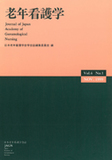Japanese
English
- 販売していません
- Abstract 文献概要
- 参考文献 Reference
兵庫県立高齢者脳機能研究センターには,1993年の開院以来,レビー小体型痴呆患者(Dementia with Lewy bodies,以下DLBと称す)約60名およびアルツハイマー型痴呆患者約750名が診断のための検査目的で入院している.これらの患者の看護を通しDLBの患者はアルツハイマー型痴呆の患者に比し,変動性のある認知機能障害,幻視,パーキンソン症状などの特徴的な症状をもつために,①転倒,転落を起こしやすい,②精神症状による異常行動により周囲の人とトラブルを起こしやすい,③日常生活活動が自ら行えないなどの問題が生じ,その対応には特有のケア技術が必要であることがわかった.これらには①看護者によるDLBの特徴的な症状の理解,②入院前生活を考慮した環境調整と安全対策,③問題行動や日常生活活動への対応法の工夫などがあげられる.DLBはアルツハイマー型痴呆に次いで多い変性疾患であるといわれており,今後,看護者によるこれらのDLBの特徴的症状の認識の向上,およびこれらにより生じる問題行動へのケア技術の周知が望まれる.
Dementia with Lewy bodies (DLB) is the second most common degenerative dementing illness characterized with cortical Lewy bodies. Since 1996, when Consortium on DLB international workshop published the diagnostic criteria for this disease, DLB is getting more acknowledged, however it has not been widely enough recognized by nurses in Japan yet. Because this disease has the distinctive clinical features, the care of the patients with DLB requires the specific care skills. We have admitted and cared about 60 patients with DLB and more than 750 patients with Alzheimer's disease(AD)since 1993 in the Hyogo Institute for Aging Brain and Cognitive Disorders. We have found that DLB patients have much more possibilities to fall, to disturb the other patients, and to need more help in activitie sof daily living as compared to AD patients due to the cognitive fluctuation, visual hallucinations, delusions, parkinsonism, and visual impairments. Therefore, for the care of DLB patients, nurses are expected to recognize the characteristic clinical features of DLB. They are also expected to share the specific care skills to predict the problems caused by these clinical features and to decrease and manage these problems appropriately.
Copyright © 1999, Japan Academy of Gerontological Nursing All rights reserved.


